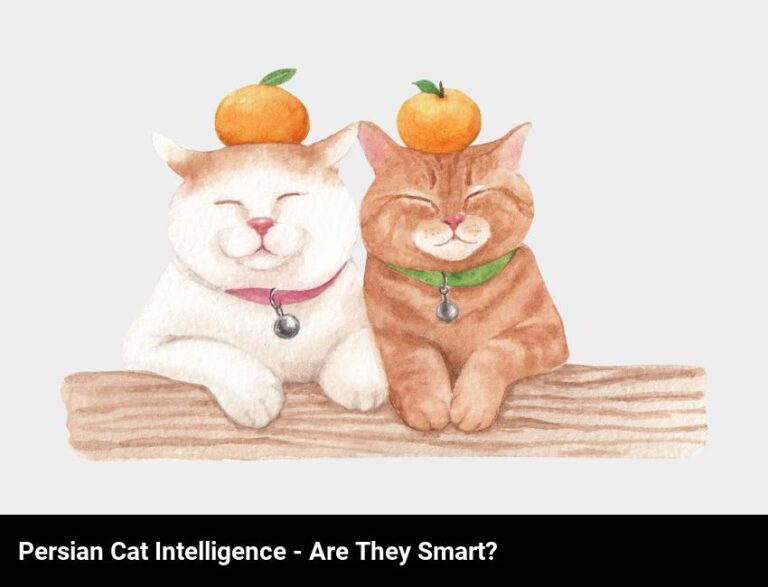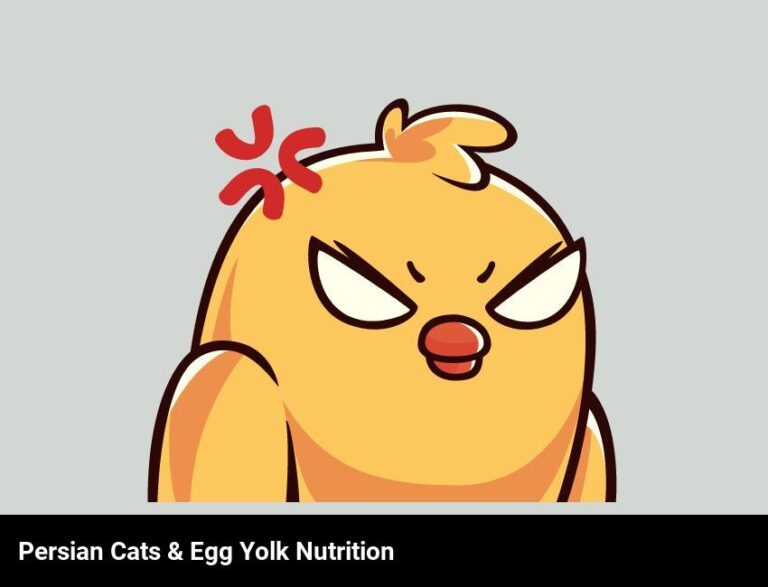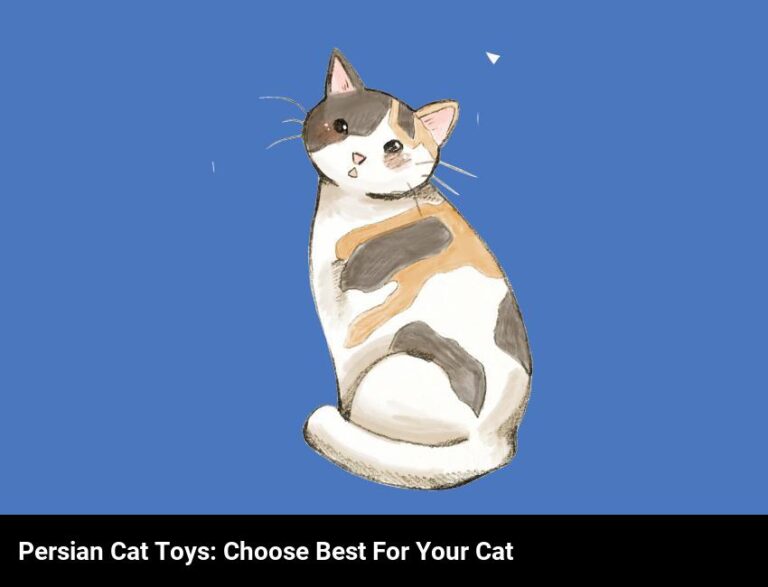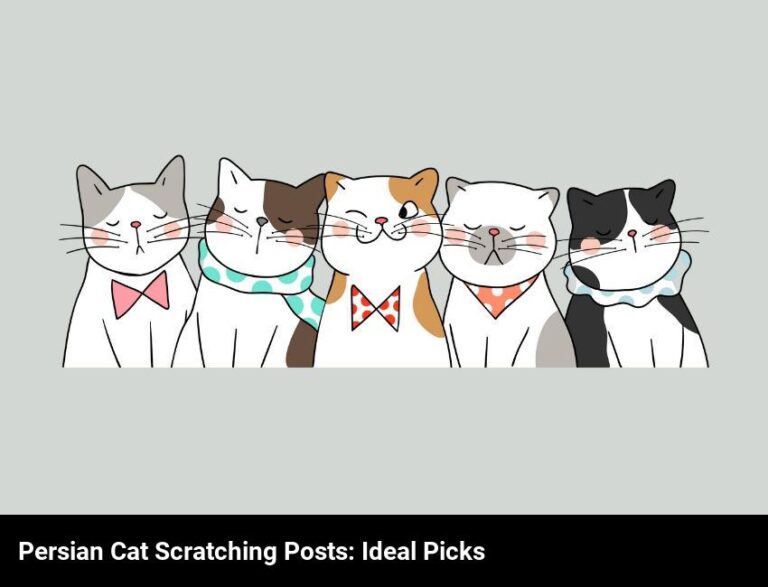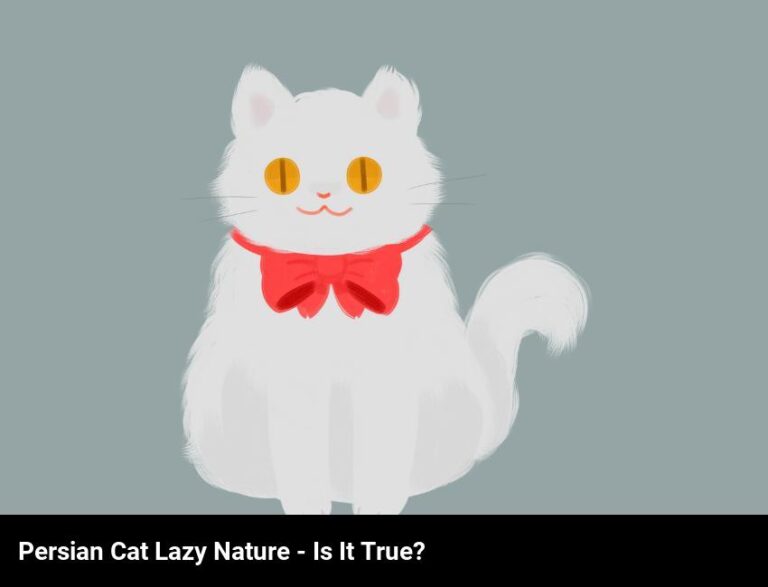Feeding Your Persian Cat: Essential Nutrition Tips
Feeding your Persian cat a balanced, nutritional diet is essential for their health. Look for high-quality cat food that contains taurine and other essential nutrients, and avoid food that is high in fat and carbohydrates. Provide fresh, clean water and feed your cat at least twice a day.
As a devoted cat parent, I understand the importance of making sure my Persian cat has a healthy and balanced diet. I know how difficult it can be to make sure that your cat is getting the right nutrients and avoiding foods that could potentially be harmful. With the right nutrition, your Persian cat can live a long and happy life.
In this blog, I will provide some essential nutrition tips for feeding your Persian cat. I’ll explain what key nutrients your cat needs, what types of food you should avoid, how much food is appropriate for a Persian cat, how often should you feed your cat, and the benefits of feeding your cat a high-quality diet. I’ll also provide some tips for transitioning your cat to a new diet and what to do if your Persian cat does not seem to be getting enough nutrition. Finally, I’ll explain the signs that your Persian cat is getting the nutrition it needs.
By following these tips, you can ensure that your Persian cat is getting all the nutrition it needs to stay healthy and happy.
What are the key nutrients that a persian cat needs in its diet?
You can keep your precious Persian cat healthy and happy by providing balanced nutrition through their diet. It’s important to understand which key nutrients your Persian cat needs in its diet.
Protein is an essential macronutrient for cats of all breeds. It helps them maintain their muscle mass and keeps their coat looking shiny and healthy. High-quality animal proteins, like chicken, fish, or lamb, are best for your cat.
Cats need healthy fats to stay in optimal physical condition. Their diet should include omega-3 and omega-6 fatty acids, found in fish and plant oils. Healthy fats support healthy skin, coat, and joint function.
Carbohydrates are important to a Persian cat’s diet, as they are a source of energy and fiber. Look for a balanced, low-carbohydrate kibble that includes sources of complex carbohydrates such as sweet potato, corn, and rice.
Vitamins A, B, and E are also important for cats, as they help maintain healthy bones, joints, and skin. Make sure your cat’s diet includes plenty of fresh vegetables and fruits like carrots, apples, and spinach.
Persian cats also need plenty of water in their diet to stay hydrated and healthy. Look for a kibble that is high in moisture content and supplement with fresh water throughout the day.
By providing essential nutrients in your Persian cat’s diet, you can ensure that your furry friend is happy and healthy.
What are the benefits of feeding your persian cat a high-quality diet?
Feeding your Persian cat a high-quality diet is a great way to keep your kitty healthy and happy. Here are some of the top benefits to keep in mind:
- Improved Digestion: A balanced diet with healthy, whole ingredients is more easily digested by cats. High-quality food is also packed with essential nutrients that help keep your cat’s digestive system functioning properly.
- More Energy: The essential nutrients in high-quality foods help provide your cat with plenty of energy. This is especially important for active cats, who may need a little extra support to stay energized.
- Shinier Coat: High-quality foods are rich in fatty acids, which are essential for promoting a healthy, shiny coat. This is especially important for Persian cats, whose luxurious fur needs extra TLC.
- Fewer Health Issues: Cats that eat a balanced, nutrient-rich diet are less likely to suffer from common health issues like obesity, diabetes, and kidney disease. High-quality foods can also help to reduce the risk of dental problems, which is especially important for Persian cats.
- Improved Mental Health: A balanced diet is key to keeping your cat’s mental health in check. High-quality foods provide essential nutrients that help keep your cat’s mind sharp and alert.
In short, feeding your Persian cat a high-quality diet is a great way to promote their overall health and wellbeing.
What are some tips for transitioning your cat to a new diet?
If you’re transitioning your Persian cat to a new diet, there are a few things you can do to make the transition as smooth as possible:
- Start by introducing the new food slowly. Feed your cat a few pieces of the new food alongside their usual meal and gradually increase the amount each day. This helps your cat get used to the new flavor and texture.
- Make sure the new food you choose is specifically tailored to your cat’s age, activity level, and any health issues they may have. Consult your vet for the best type of food for your Persian cat.
- Make mealtime special. Cats are creatures of habit and forming a routine for mealtimes helps them transition to a new diet more easily. Give them a special treat or toy to encourage them to try the new food.
- Monitor your cat’s progress. Pay attention to how your cat is responding to the new food. If they seem to be having difficulty adjusting, speak to your vet for advice.
- Be consistent. Once you’ve decided on a new diet for your cat, continue to feed them the same food consistently. This will help them adjust to the new diet without any setbacks.
What types of food should you avoid feeding your persian cat?
When it comes to feeding your Persian cat, it’s important to make sure you’re giving them the right types of food. Unfortunately, there are certain types of food that you should avoid giving your Persian cat, as they can cause health problems. Here are the top foods that you should avoid when feeding your Persian cat:
- Dairy Products: Even though cats love milk, it’s best to avoid dairy products when it comes to your Persian cat. Dairy products can cause digestive issues and can even lead to obesity.
- Bones: Bones are an absolute no-no when it comes to cats, and that includes Persian cats. Bones can splinter, which can cause serious internal damage to your Persian cat.
- Raw Meat: Raw meat can contain harmful bacteria that can make your Persian cat very sick. It’s best to cook all meat before feeding it to your cat.
- Chocolate: Chocolate is toxic to cats, and that includes Persian cats. Even a small amount of chocolate can make your cat very ill, so it’s best to avoid it altogether.
By avoiding these foods and feeding your Persian cat the right types of food, you’ll be helping them to stay healthy and happy.
How much food is appropriate for a persian cat?
When it comes to feeding your Persian cat, it’s important to make sure you give them the right amount of food. But how much is the right amount? Every cat is different, but in general, a Persian cat should have about one-half to three-quarters of a cup of dry food per day, split into two meals. If you’re feeding wet food, a Persian cat should have three to five ounces per day, split into two meals.
Of course, the exact amount of food your cat needs depends on their age, activity level, and general health. If your cat is young, growing, or highly active, their daily food intake should be higher. If your cat is older, less active, or has health issues, their daily food intake should be lower.
When it comes to food, the quality matters as much as the quantity. Make sure you’re providing your Persian cat with a nutritionally balanced diet that provides them with all the essential vitamins, minerals, and amino acids they need to stay healthy. Look for a food specifically designed for Persian cats and check the ingredients to make sure it contains quality protein, healthy fats, and other essential nutrients.
If you have any questions about how much food to give your Persian cat, don’t hesitate to talk to your vet. They can give you more specific advice on the right amount of food for your cat’s individual needs.
How often should you feed your persian cat?
When it comes to feeding your Persian cat, it’s important to know how often to do so in order to maintain their health and wellbeing. It’s recommended to feed your Persian cat at least twice a day. This should be done in the morning and evening with an equal amount of food in each meal.
Of course, the total amount of food you give your Persian cat will vary depending on their age, weight, and activity level. Generally, adult cats will eat about 4 ounces of food per day, and kittens should eat about 8 ounces of food per day. You should also make sure you are feeding your Persian cat a quality wet food that is specifically formulated for cats.
It’s also important to make sure your Persian cat isn’t eating too much. Persian cats are known for their love of food, and they can easily become overweight if they’re overfed. Make sure to monitor your cat’s weight and adjust the amount of food accordingly.
Finally, make sure to provide clean, fresh water to your Persian cat at all times and clean their food and water dishes regularly. This is especially important if you are feeding your cat wet food as it can spoil quickly and lead to health issues if not eaten right away.
By following these simple guidelines, you can ensure that your Persian cat is getting the nutrition they need to stay healthy and happy.
What should you do if your persian cat does not seem to be getting enough nutrition?
If your Persian cat isn’t getting enough nutrition, the first thing you should do is take them to a veterinarian to check for any underlying illnesses. It is important to rule out any medical conditions that could be causing the nutritional deficiency.
Once you know your cat is healthy, you should evaluate their diet. Make sure they are eating a high-quality cat food that is specifically tailored to the nutritional needs of a Persian cat. If they are not, switch to a product that meets those needs. It is also important to feed your cat a proper amount of food each day, and not over or underfeed them.
In addition to feeding your cat proper food, you can supplement their diet with treats and supplements. Look for treats and supplements that are rich in omega-3 fatty acids, as these are essential for a Persian cat’s health. You can also give them a small dose of plain yogurt to provide additional probiotics and vitamins.
Finally, make sure your cat is drinking enough water. Persian cats are known to be picky drinkers, so you may need to try several types of water dishes and locations to encourage them to drink. Persians also tend to prefer running water sources, so consider investing in a water fountain for your cat.
What are the signs that your persian cat is getting the nutrition it needs?
It’s important to make sure your Persian cat is getting the nutrition it needs in order to stay healthy and happy. Fortunately, there are some signs you can look out for that indicate your cat is getting the nutrition it needs.
The first sign that your Persian cat is getting the nutrition it needs is a shiny coat. A healthy, glossy coat is a sign that your cat is getting the essential fatty acids it needs in its diet. If your cat’s coat is looking a bit lackluster, then it may be time to switch up its diet a bit.
Another sign to look for is a healthy weight. Persian cats are prone to weight gain, so it’s important to make sure your cat is eating the right amount of food, and not overeating. If your cat is at a healthy weight, then it’s a sign that you’re providing the right amount of food and nutrition.
Finally, if your cat has plenty of energy and is active and playful, then it’s a sign that it’s getting the nutrition it needs. A healthy, well-fed cat should have plenty of energy and be eager to play and explore. If your cat is lethargic and not interested in playing, then it’s a sign that something is off in its diet.
By keeping an eye out for these signs, you can make sure your Persian cat is getting the nutrition it needs to stay healthy and happy. With proper nutrition, your cat should be full of energy and have a beautiful, glossy coat.
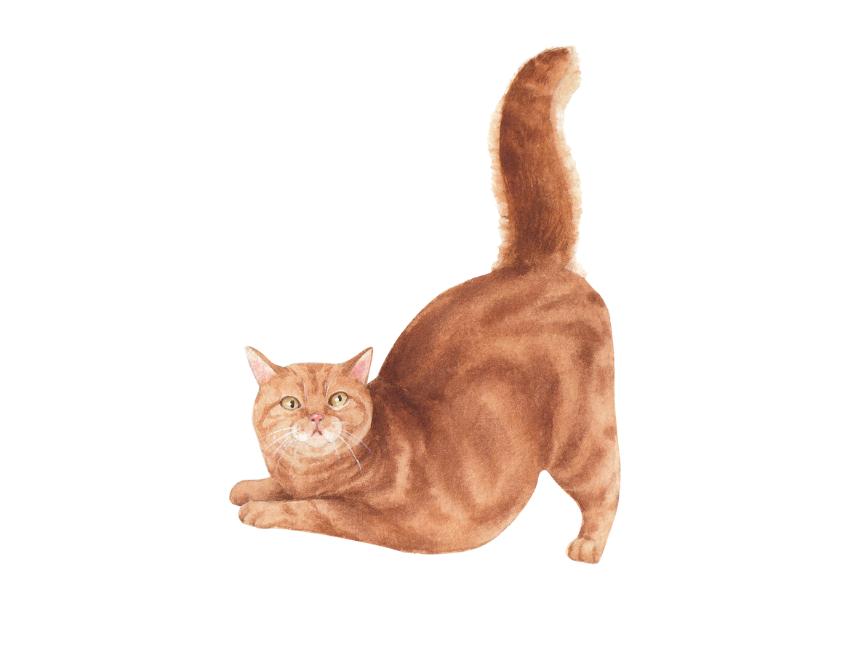
Frequently Asked Questions
How can you ensure your persian cat is getting all the essential nutrients it needs?
To ensure your Persian cat is getting all the essential nutrients it needs, feed it a balanced diet of premium-quality wet and dry cat food that is specifically formulated for Persians. Additionally, supplement their diet with fresh fruits and vegetables, and ensure they are always provided with fresh, clean drinking water. Also, it is important to follow your veterinarian’s advice on any specific dietary requirements for your Persian cat.
What are the most important dietary considerations for a persian cat?
When it comes to feeding your Persian cat, the most important dietary considerations are providing a high-protein diet, avoiding fillers, monitoring carb intake, and ensuring they have access to clean water. Make sure your cat’s food contains plenty of animal-based proteins and avoid ingredients like corn, wheat, and soy. Additionally, monitor the carbohydrate content in their food and aim for a diet that is low in carbs. Lastly, make sure your Persian cat has access to clean, fresh water at all times.
Are there any ingredients you should specifically avoid when feeding your persian cat?
Yes, there are certain ingredients you should avoid when feeding your Persian cat. It is important to steer clear of foods with artificial flavors, preservatives, and dyes as these can be harmful to your cat’s health. Additionally, foods that are high in sugar, fat, and salt should be avoided. While these may be tasty, they can lead to medical issues such as obesity and diabetes. Finally, stay away from any food products that contain the artificial sweetener xylitol, as this can be poisonous to cats.


